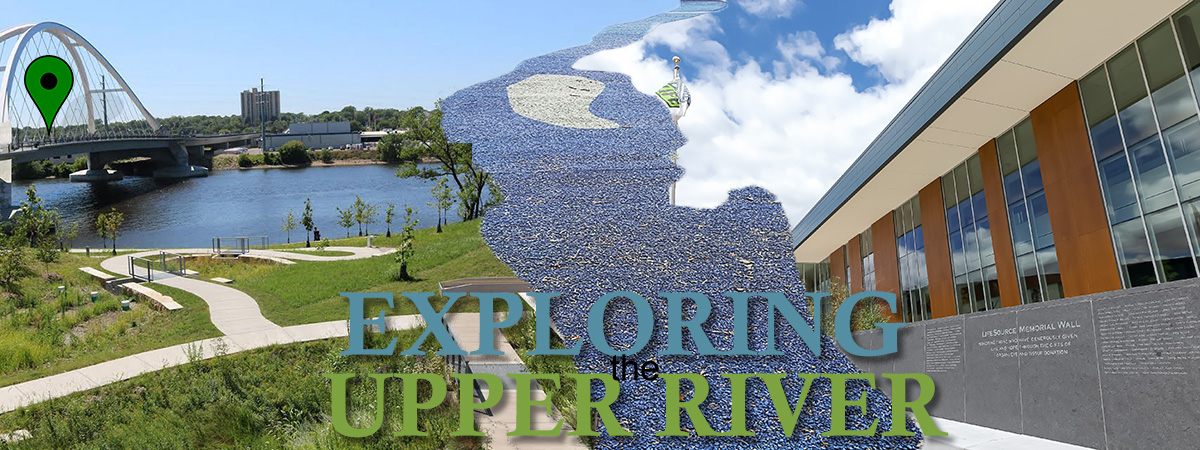
Bridges
By Kathleen Boe
Minneapolis Riverfront Partnership
Driving home from the office recently, I took a moment to look off from the bridge over the Mississippi and I was struck by what I realized.
This series is supposed to be about hidden places along the upper river in Minneapolis, and the three bridges between North Minneapolis and Northeast certainly qualify. What’s more hidden than something which is hidden in plain view?
Photo by Michael Hicks, CC-BY-2.0
We tend to think of bridges as utilitarian objects, when we think of them at all. A transit point between two parts of a city. An inconvenience to be gotten past.
Stopping on a bridge is probably last on most people’s minds, since generally it would mean one is stuck in traffic, a major inconvenience.
I’m here to suggest you park your vehicle, get out, walk and look. Slow down. For this is a great time of year to do so.
Stopping along any of the three bridges will give you some of the best views of the Minneapolis skyline. We’re heading into fall, and the river is incredible with fall colors. Every day you can be surprised and awed about how beautiful the river is, whether we’re talking about the Plymouth Ave. Bridge or Broadway or Lowry.
It’s very easy to make an afternoon of it. You could drive between the bridges, but instead, you should think about biking. Or even walking. From the Plymouth Ave. Bridge, it’s only three-quarters of a mile to walk to Broadway and a total of two miles to Lowry. That’s easily manageable by foot, although there are Nice Ride stations where you can easily rent a bike all through this area.
There are, of course, things that are common to the view to all three of these bridges. Plymouth is your closest view to downtown. That’s where the skyline and entrance, the flow of the river into downtown is more apparent. You have Boom Island Park right there for a green setting. It’s also the most bike-friendly of the three bridges.
If you want to get out and walk, or park and bike, you can park along the river roads, especially along West River Road. There is also a paid lot here at Boom Island.
On the Broadway Avenue Bridge, you get a sense of the expanse of the river, both to the south and the north. You’re in the center of the upper river area, with downtown on one side and industry on the other.
Parking is similar, again, especially along West River Road. On the Northeast side, there is street parking along 13th Avenue NE, as well as parking for Sheridan Memorial Park.
The Lowry Avenue Bridge is the newest of the three and it’s the only one with lighting in this corridor. Now there is talk about lighting even more bridges. The thing about the Lowry bridge is it’s the best place to get a view of the Upper Harbor Terminal. It’s also by the Mississippi Watershed Management Organization building, and there’s a path down to the shore.
From Lowry you can get a sense of all the river activity, including the docks by the Sample Room, the houseboats along the river. You realize that people use the river in lot of ways that one never thinks about. You just get a sense that there’s this river community when you are looking at it from the Lowry Bridge toward the south, from the northeast side.
There is parking along Marshall Avenue in this area.
Of course, there is one more bridge even further up, and from the Camden Bridge you get a completely different sense of the river and of downtown. Think of it as the entrance to Minneapolis. This will also be the place to watch the UHT work once it gets underway.
These crossings serve to do more than help get us from Point A to Point B. They’re a beautiful vantage point above the Minneapolis riverfront which can give us a new perspective.
Kathleen Boe is Executive Director of the Minneapolis Riverfront Partnership. She can be reached at kathleen.boe@minneapolisriverfront.org via email, or minneapolisriverfront.org on the web.